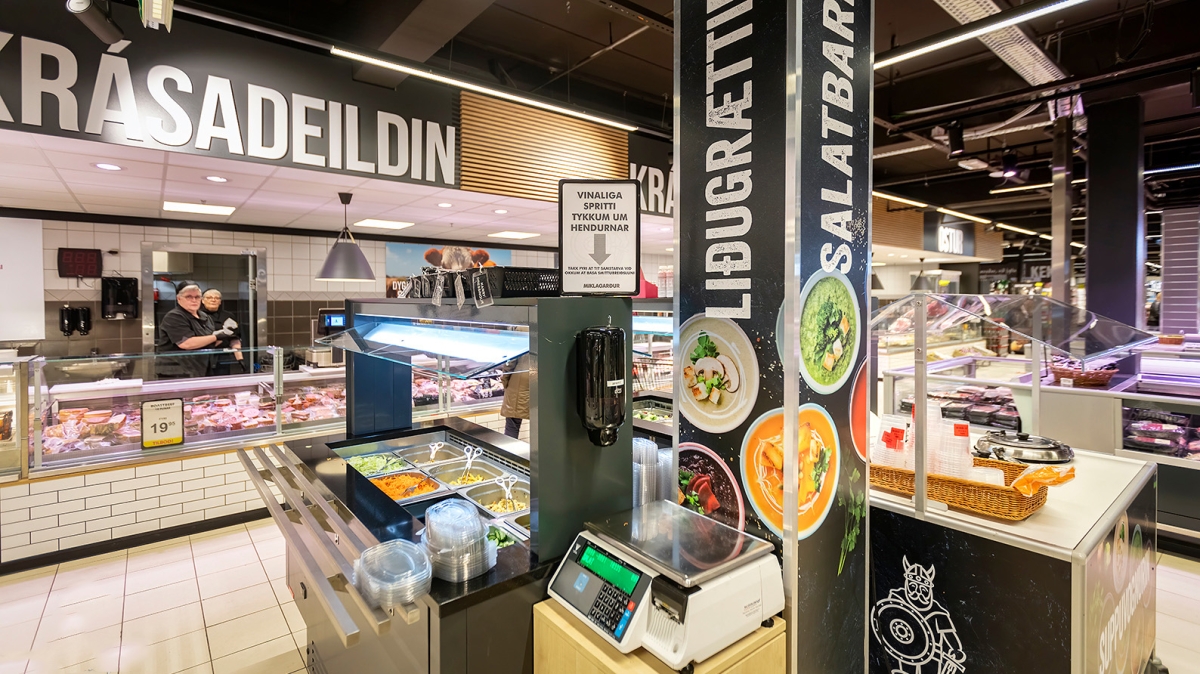Consumer price index
07. Oct 2024
Inflation falls to 1.7%

The Consumer Price Index (CPI) measures inflation as experienced by Faroese households in their daily living expenses. The latest CPI figures are from August 2024.
[px-graph-8]
Consumer price growth has remained steady this past year, reaching its lowest level since February 2021.
[px-graph-1]
Grocery prices the key factor in inflation
Of the 12 main categories in the CPI, ‘Food and non-alcoholic drinks’ make up the largest portion of the average Faroese household spending. This category is also the key factor in inflation.
Prices in ‘Clothing and footwear’ fell 3.5% year-on-year. ‘Recreation and culture’ prices also went down, while prices in ‘Furnishings and household equipment’ remained steady.
[px-graph-2]
Grocery prices still growing
‘Food and non-alcoholic drinks’ prices rose by just over 4% year-on-year.
[px-graph-3]
Within the ‘food and non-alcoholic drinks’ category, food prices outpaced beverage prices, rising 4.5% year-on-year. Meat prices saw the biggest hike, rising 11% overall, with lamb prices leading the way. Fish prices are also up.
Other food products such as milk, cheese, eggs and fruit saw a more modest price growth.
[px-graph-4]
Some grocery items, including coffee, have become cheaper in the past year.
Slower price growth in housing
Housing costs for Faroese households increased by just over 3% from August 2023 to August 2024. This increase comes despite lower interest rates introduced in the summer of 2024. However, interest expenses now contribute less to the inflation rate compared to the CPI reports in the past 18 months. A 7.5% drop in the average price of liquid fuels for household heating has contributed to the overall decline in inflation.
[px-graph-7]
A surge in electricity and district heating prices in January 2024 played a significant role in the annual price growth in the housing category.
[px-graph-5]
Average EU inflation is 2.4%
The Faroese inflation rate is below the EU average of 2.4%. Nordic nations range from Iceland's 6.0% to Finland's 1.2%.
[px-graph-6]
It should be noted here that the EU inflation rate is based on the HICP index (the Harmonised Indices of Consumer Prices), which means that rental costs are not included.
About the Consumer Price Index and inflation
Inflation is the rate of increase in prices over a given period. The Consumer Price Index (CPI) is the most widely used measure of inflation. It measures the overall change in consumer prices based on a representative basket of household goods and services. If the annual inflation rate is 5%, consumers must pay DKK 105 for the same goods or service that cost DKK 100 the previous year.
When the inflation rate is high, money effectively loses value because you receive fewer goods and services for the same amount spent. In other words, a household’s purchasing power decreases if its income does not keep up with the inflation rate.
The CPI is one of many measures of inflation in an economy. Others include the Producer Price Index, which is a measure of the change in prices that domestic producers receive for their goods and services, and the so-called GDP deflator, which is a measure of the price of all new, domestically produced, final goods and services in an economy in a year relative to their real value.
Changes in consumer prices vary across the categories of goods and services. The CPI weighting system reflects the relative importance of the goods and services as measured by their shares in the total consumption of households.
Faroese CPI figures are compiled quarterly, in February, May, August and November. This is done in accordance with international standards, thus allowing for comparisons with the CPI figures of other nations.